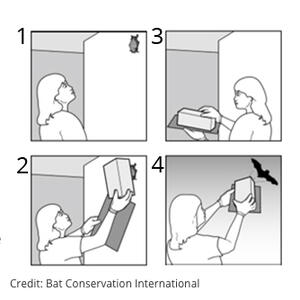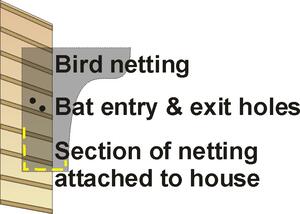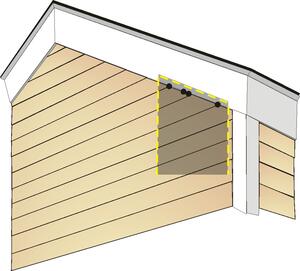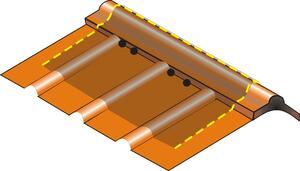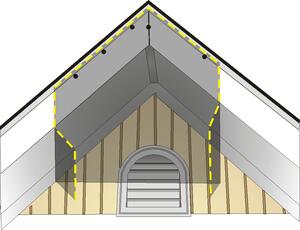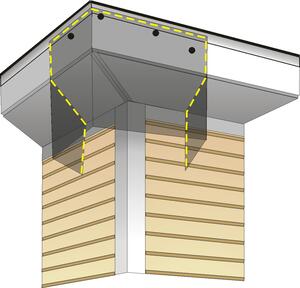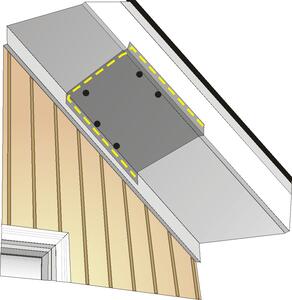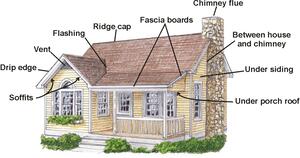Bats in Houses
INDEX
Introduction
A single bat in your house
Winter visitor
Bat colonies in your house
What kind of bats are in my building?
How did bats get into my home?
How can I help bats?
It’s not uncommon for a bat to get into your home whether that is in the attic, chimney, crevice, etc. Bats squeeze into small, tight places to seek refuge for a few nights up to several months. You are most likely to find a bat in your home in the early Spring when they have left their winter roost, mid-July to late-August when young bats are learning to fly, or late September to early-November when bats are migrating to their winter roost to hibernate. If this has happened to you, you will want to keep reading to find out what you should do and what it means for you.
Spring/Summer/Fall visitor
A lone bat can get lost and end up in your home by mistake. Depending on the time of year, the bat could be migrating or if it is very young, learning to fly. Often times, these end up with fatal results for the bat.
If you find a bat in your living space, never handle a bat with bare hands. Call the KDHE Epidemiology Hotline at 877-427-7317 to help determine if the bat needs to be tested for rabies. People found in rooms with bats that are unable to state “I know I was not bitten,” may have been exposed to rabies. This would include persons who wake up to find a bat in the room or children alone with a bat in a room. For instructions on how to safely capture a bat, please watch a video provided by the Minnesota Department of Health at: https://www.youtube.com/watch?v=NNw6hkFEtOk. If you suspect your pet has come into contact with a bat, please contact your local vet**
If you are certain that there has been no contact between the bat and people or pets, then you can try the following:
- If a bat is flying around inside your home, open all the doors and windows that exit to the outdoors and the bat might fly out. If the bat is limited to one room, close doors to other parts of the house to keep the bat from flying into another room. Bats can use their vision as well as echolocation (like a sonar system) to find their way to an open door or window. The saying ‘blind as a bat’ is a myth.
Wait for the bat to land. While wearing thick leather gloves, cover the bat with a small box or another container. Carefully slip a piece of cardboard or large envelope between the wall and the container. Slowly turn the box over, containing the bat inside. Most bats need to drop into flight from an elevated area so it’s best to place the container on its side on a tree branch or a second story deck. The bat will climb out and fly away.
- Carefully catching the bat with a butterfly net is also an option. Once captured, take it outdoors and release it. This is very difficult to do especially if the bat is flying around and healthy. It is best to wait until the bat has landed to capture it. We encourage anyone that is removing the bat from the house to use thick leather gloves to protect yourself from potential bites. Do NOT handle bats with your bare hands! Wash hands with soap and warm water once you are done handling the bat. Bats are usually not aggressive. It is likely that the animal is more afraid of you than you are of it.
- Check around your home for small holes and crevices. A lack of maintenance around the home can create small holes and crevices that bats can use. Filling in small holes and crevices around your home will prevent the bat(s) from returning.
A bat found in your home in the winter is most likely a Big Brown Bat. The bat is probably attracted to the warmth of your home or the extreme cold pushed the bat to search for a warmer area to hibernate. As long as you are sure that no bat to people or pet contact has occurred, you can try the methods listed above. Big Brown Bats are tough and able to survive colder temperature long enough to find an alternative roost. The other species in Kansas do not generally hibernate in homes as the temperature is not ideal.
Generalized Bat Activity to assist with timing exclusions.
| Bat Activity in Kansas | |
| March – Early May | Bats leave their winter roost (hibernaculum) and return to summer roosting sites. Colonies of bats form maternity (females to birth pups) and bachelor groups (male bats). |
| May – Late June | Bat pups are born. This is a very vulnerable time for mother bats and their pups. The pups cannot fly and are dependent on the mothers for transport and food (milk). Exclusion can cause higher death rates because the young cannot escape.Bat exclusion and removal is not recommended at this time. |
| July - August | Mothers are teaching pups to fly and search for insects. By August, pups can fly alone and death by exclusion is greatly reduced. |
| September - October | Bats are leaving their summer roosts and going to winter roosts.Best time for exclusion. |
| November - February | Bats are hibernating and will occasionally wake up and leave the roost on warm days in search of water and/or insects.Bat exclusion and removal is not recommended at this time. |
Finding a colony of bats in your home can be quite alarming! We recommend the following methods for exclusion:
- Exclusion method*- A small piece of mesh or netting to create a one way exit for bats that might be in an attic. It is best to exclude bats from your home in the early spring or fall, when there are no flightless young. Young bats that are not able to fly can get trapped inside which can lead to an upset mother bat and/or smelly dead bat. For more information on excluding bats from your home go to: http://www.batcon.org/resources/for-specific-issues/bats-in-buildings
- Contact local pest control. Many of these services can remove the bats. In most cases, these professionals have a special permit from KDWP that falls under Nuisance Wildlife Control. You can find more information about these permits and a list of permitted pest control companies at http://ksoutdoors.com/Services/Wildlife-Damage-Control/Nuisance-Wildlife-Damage-Control (click NWDC Permit Holders). Pest control companies that are permitted through KDWP will state which animals they can remove. Bats fall under nongame mammal removal.
- Check around your home for small holes and crevices. A lack of maintenance around the home can create small holes and crevices that bats can use. Filling in small holes and crevices around your home will prevent the bat(s) from returning.
*When trying to exclude bats from your home, go out at dusk and watch where the bats are exiting. It is also a good idea to look for evidence of guano (poop) around your home, specifically near holes and crevices. Once all the entrances/exits are identified, install a one-way door. The netting or mesh covering should be carefully placed so the bat entry and exit holes are not blocked. The netting or mesh needs to hang 2-3 ft. below the exit hole to help prevent bats from re-entering the entry/exit hole. The one way exit door should be left in place for 5-7 days to ensure that all bats have left. Keep in mind that on rainy evenings, bats will not exit. Once you are sure that all bats have successfully exited, seal all entrances the bats were using and the one-way doors can be removed. Dr. Stephen C. Frantz, senior research scientist for the New York State Department of Health, successfully designed and field tested these one-way door methods using bird netting.
What kind of bats are in my building?
Kansas is home to 15 species of bats. Some of the more common bat species in Kansas that can form colonies in your home are: Big Brown Bat (Eptesicus fuscus), Little Brown Bat (Myotis lucifugus), and Evening Bat (Nycticeius humeralis). Not so commonly found but have been documented in literature are: Northern Long-eared Bat (Myotis septentrionalis) and Tri-colored Bat (Perimyotis subflavus). To find a complete list of bats in Kansas, please visit Kansas Mammal Atlas.
How did bats get into my home?
Bats enter buildings from gaps or cracks that are 1/4" to 1/2" in diameter or larger. Some of the ways bats gain entry include:
- an unscreened attic vent
- a hole or crack under a rotted eave
- a crack or separation where the chimney meets the house
- loose or warped siding
- an open cellar hatch
- chimney
- openings where pipes or wiring met the house
- rotted window sills or a loose fitting screen
There are many ways that you can help bats. One of the first ways to help bats is to safely remove or exclude them from your home. Putting up bat houses around your yard is another step in helping conserve our bats. Bat Conservation International is a great resource to use when looking for directions on how to build your own bat house or if you need ideas on where to purchase a bat house.








